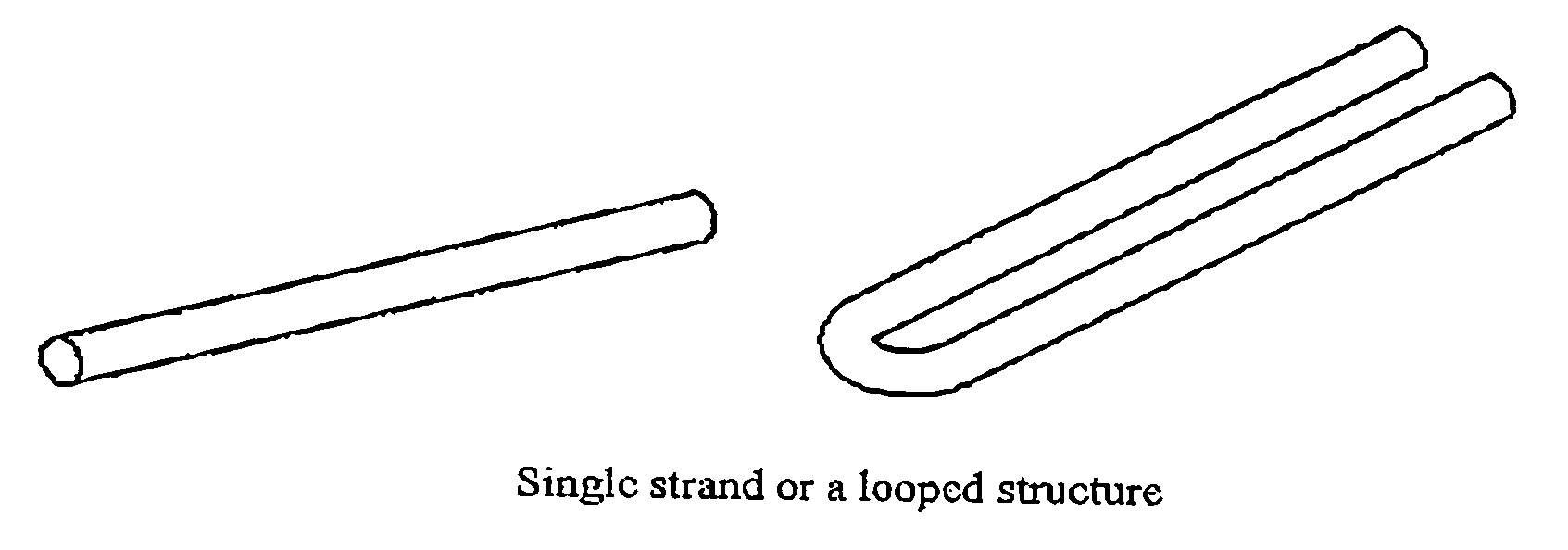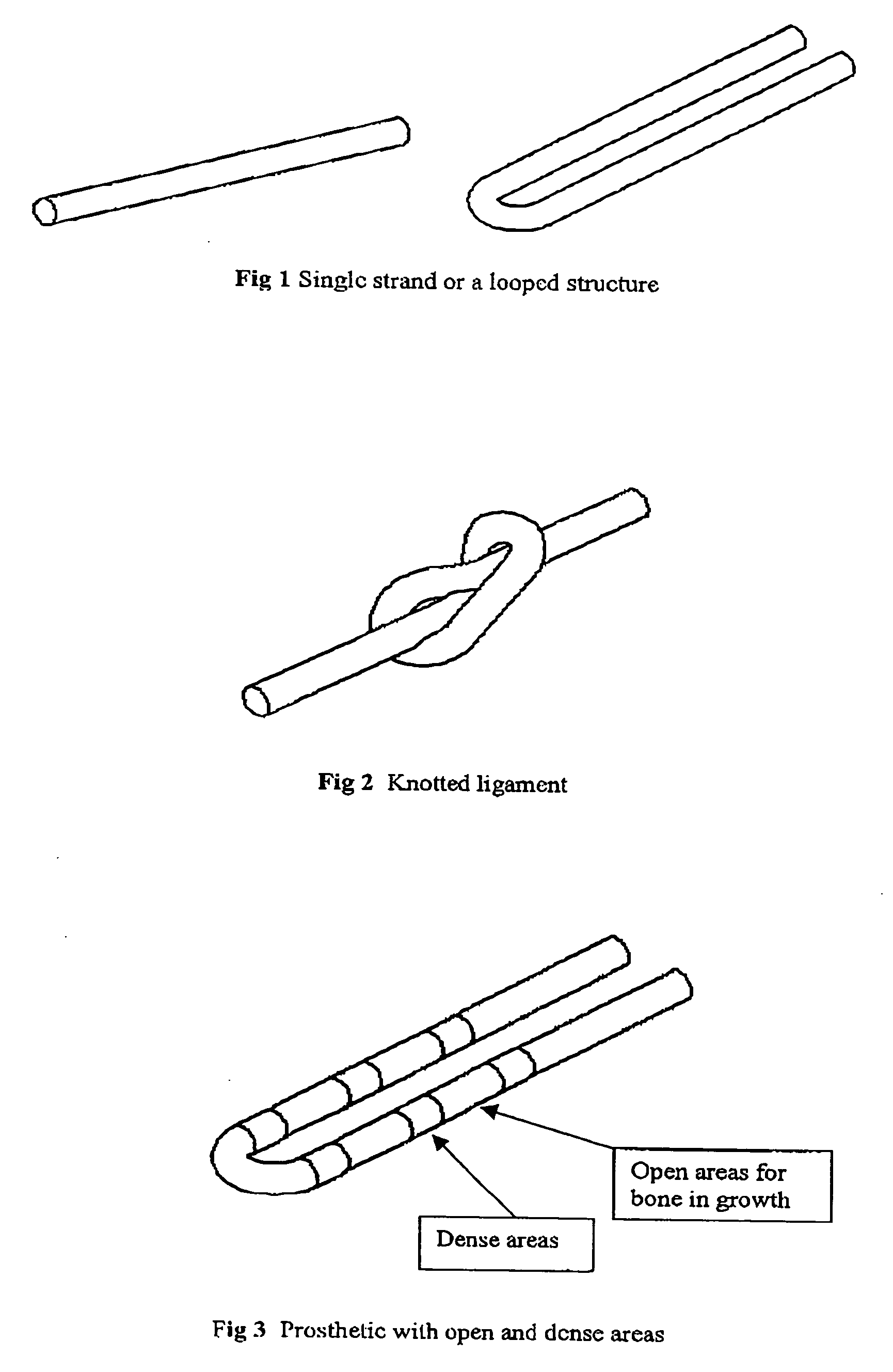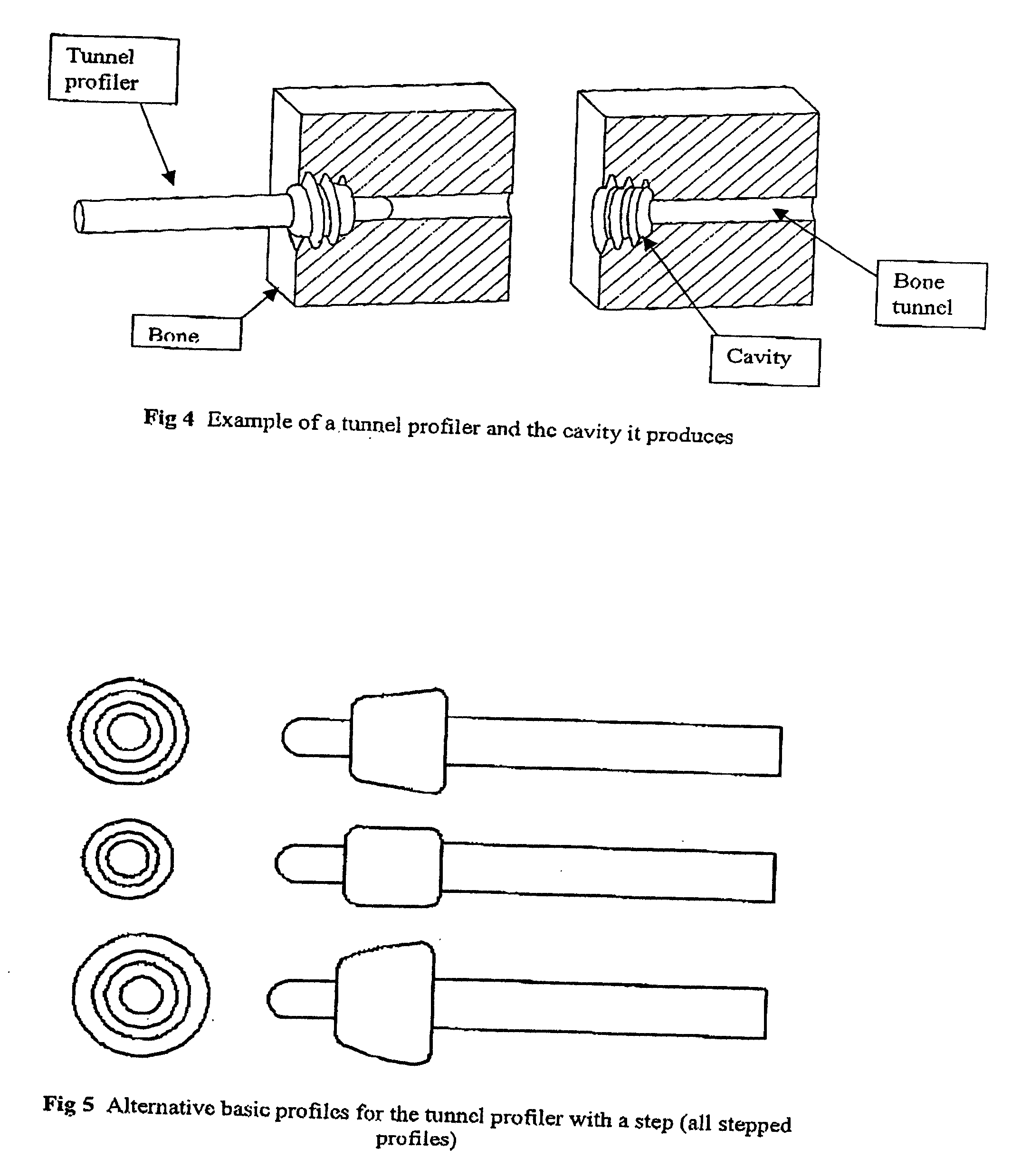Prosthetic implant assembly
a technology for prosthetic implants and parts, applied in the field of prosthetic implant assembly, can solve the problems of wear debris particles accelerating damage to surrounding tissues, affecting the success of implants, and permanent ligament prostheses still perform poorly in the long-term
- Summary
- Abstract
- Description
- Claims
- Application Information
AI Technical Summary
Benefits of technology
Problems solved by technology
Method used
Image
Examples
Embodiment Construction
[0037] Ligament
[0038] The ligament may be an allograft, autograft or a prosthesis. This ligament may be a single strand or a looped structure. Multiple stands or loops could be used (FIG. 1).
[0039] A positive interlock between the ligament and bone cement can be achieved to aid fixation. This could be produced by the ligament having a rough surface. Alternatively the ligament could be knotted once, or in several placed along its length such that the bone cement would encapsulate these features (FIG. 2). In the case of the prosthetic it may consist of a series of integral "open" and "dense" areas (FIG. 3). The open areas would allow a greater amount of cement penetration and hence provide a greater interlock.
[0040] Bone Cement
[0041] The cement may act as an adhesive to attach the ligament to the adjacent bone. Alternatively it may act as a filler material, fixing the ligament to the bone by mechanical interlock due to the rough surfaces.
[0042] The cement should provide immediate stru...
PUM
 Login to View More
Login to View More Abstract
Description
Claims
Application Information
 Login to View More
Login to View More - R&D
- Intellectual Property
- Life Sciences
- Materials
- Tech Scout
- Unparalleled Data Quality
- Higher Quality Content
- 60% Fewer Hallucinations
Browse by: Latest US Patents, China's latest patents, Technical Efficacy Thesaurus, Application Domain, Technology Topic, Popular Technical Reports.
© 2025 PatSnap. All rights reserved.Legal|Privacy policy|Modern Slavery Act Transparency Statement|Sitemap|About US| Contact US: help@patsnap.com



